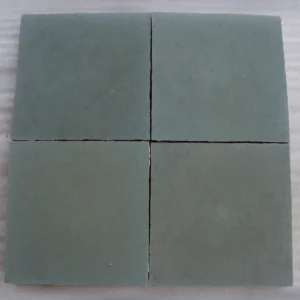Choosing the right countertop for kitchen renovation project is not easy. This is because there are hundreds of options available to choose from like granite, marble, and others. But very few people consider installing limestone countertops due to lack of knowledge. In general, the most commonly considered properties of countertops are heat resistance, stain resistance, durability, stunning colors, attractive design, and others. Among various options available to choose from, limestone countertops emerge as a beautiful and durable choice among architects and homeowners worldwide. Let’s get to know more about them below.

The Use of Limestone in Construction
For several years, limestone has been extensively used in the construction domain, primarily in the preparation of cement. Low traffic areas that are also simpler to maintain are where limestone performs best. Limestone is attractive, but because of its porosity and chemical makeup, it is prone to stains, erosion, and pitting. Although less permeable, denser limestone countertops can minimise incursions with adequate sealing.
On the plus side, limestone may be safely cleaned of red wines, catchup, grape juice, and hundreds of other food stains with regular oxygen bleach.

What is limestone?
Limestone is a sedimentary rock which is made up of calcite or dolomite, the calcium and magnesium carbonates. Small fossils, shell pieces, and other fossilised detritus are frequently found in its composition. On careful inspection of the stone surface, these fossils are frequently apparent to the unassisted eye, however this is not always the case. The grain in certain types of limestone is quite fine.

- Although limestone often has a grey colour, it can also be white, yellow, or brown. Being soft, the rock is readily scraped. It quickly effervesces in any typical acid.
- From coquina, which is a matrix of whole or fragmented sea shells loosely bonded by calcite, to oolitic limestones and microcrystalline limestones, whose features are so minute that they can only be seen under magnification, limestones can vary widely in texture and porosity.
- Major geological events can cause limestone deposits to metamorphose, which can lead to marble re-crystallizing.
- Oolitic limestone is made up of a sizable portion of “oolites” or “ooliths.” Oolites are tiny, concentric calcite grains that are spherical or sub-spherical in shape.
Benefits of Installing Limestone Countertops
- Since limestone often has neutral tones, it may help give your home a more natural appearance. Pure white, off white, ivory, beige, brown, grey, red, and yellow are a few of the colour variants.
- Similar to other natural stones, limestone contains distinctive patterns of fossilisation that change from stone to stone. The varied shapes, sizes, and colours may give your area an opulent appearance and a cosy feel.
- Limestone may be incorporated into a variety of interior design and décor styles because of its timeless, classic appeal. Limestone could be an excellent option if you want a stone surface that will never go out of style and look nice now and in 60 years.
- In addition to its ageless beauty, limestone often lasts a very long period with adequate maintenance. The Lincoln Memorial, the Great Pyramid of Giza, and the Parthenon are just a few famous and historic structures built of limestone that are still standing today.
- Although limestone may be polished and has a smooth granular surface, it won’t be as glossy as marble or granite.
- Due to the heat resistance of limestone, placing a hot pan or dish directly on the countertop won’t cause any harm.
- The price advantage of limestone countertops over materials like granite or marble is its last advantage. Due to its aesthetic appeal, high level of durability, and reasonable price, limestone has grown in popularity.
Maintenance of Limestone Countertops
Maintenance and Care
Even though limestone is a beautiful, strong, and heat-resistant material for kitchen countertops, it does require a lot of maintenance. Let’s talk about how to maintain the beauty of your limestone countertops by properly caring for them.
Sealing
Since limestone is often pale in colour and more porous than other types of stone, it is susceptible to staining. To avoid stains, you should have your countertops properly sealed both after installation and once a year. Although no sealer is completely efficient at avoiding stains, going with a water-based sealant may provide the greatest defence. For further protection, you can apply a cleaning spray with sealing characteristics once a week or once a month.

Scratches
You may softly buff your countertops with fine steel wool or a little bit of polishing compound if you discover small scratches on them. Cutting boards and laying your plates and utensils on placemats will help you avoid scratches while using knives.
Cleaning
Traditional home and kitchen cleansers cannot be used to clean limestone surfaces. We advise using a neutral pH cleanser made especially for limestone countertops or a solution of warm water and mild detergent. To avoid scratching your counters, use a soft towel or washcloth to wipe them down.
Discoloration and stains
Your limestone countertops should be cleaned up after spills as soon as possible to avoid stains and discoloration. One cup of flour and two to three teaspoons of hydrogen peroxide can be used to produce a poultice to cure stains. In the absence of these components, a store-bought poultice will also function.
The Conclusion
A very elegant-looking and sophisticated natural stone is limestone countertops. Limestone offers a wide range of color and texture possibilities, making it a viable alternative for every room in your house. For the proper person, the long list of benefits can exceed the upkeep needed.
